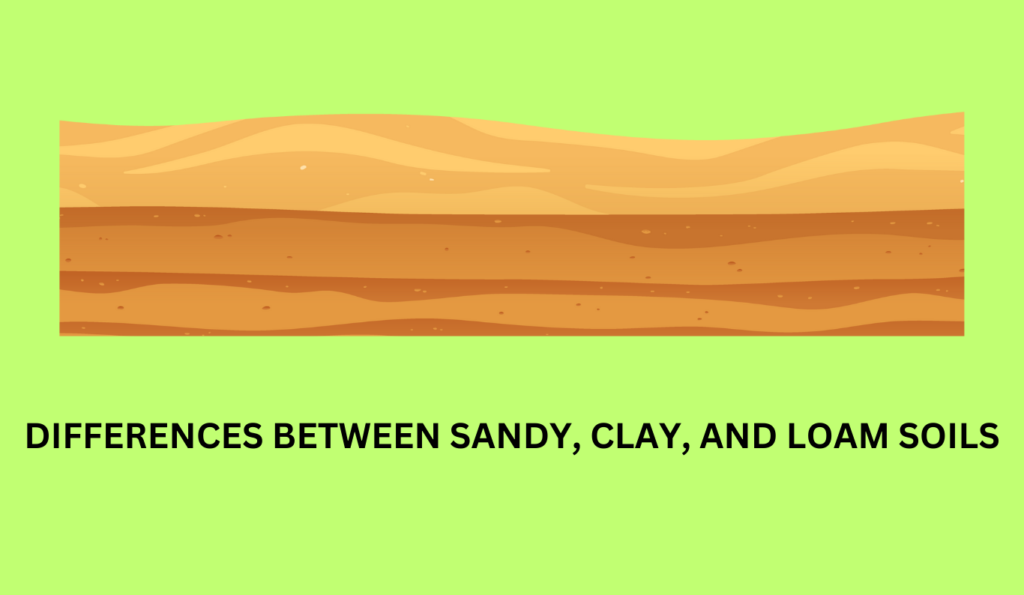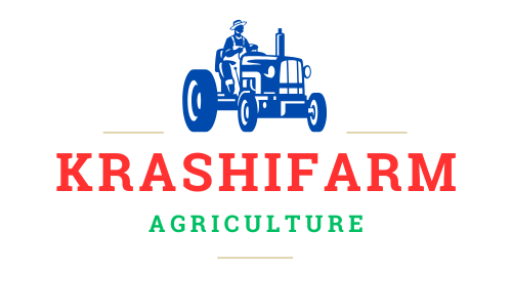Characteristics:
- Made up of large, coarse particles that do not stick together.
- Feels gritty when touched and is easy to dig.
- Has large pore spaces, allowing air and water to move freely.
Water Retention & Drainage:
- Drains very quickly, making it prone to drought.
- Does not retain moisture well, so plants may need frequent watering.
Nutrient Availability:
- Poor nutrient-holding capacity because water washes nutrients away.
- Requires frequent addition of organic matter (compost, manure) to improve fertility.
Plant Growth Suitability:
- Best for drought-tolerant plants like cacti, carrots, potatoes, and peanuts.
- Commonly found in desert and coastal areas.
2. Clay Soil
Characteristics:
- Made up of very fine particles that stick together.
- Feels smooth and sticky when wet, hardens when dry.
- Has small pore spaces, making it dense and heavy.
Water Retention & Drainage:
- Holds too much water, leading to poor drainage.
- Can become waterlogged, suffocating plant roots.
Nutrient Availability:
- High nutrient content, but nutrients may be hard for plants to absorb.
- Adding organic matter can improve its structure and nutrient availability.
Plant Growth Suitability:
- Supports water-loving crops like rice, cabbage, and certain flowers.
- Found in river valleys and wetland areas.
Challenges:
- Becomes hard and compacted when dry, making cultivation difficult.
- Needs proper aeration (mixing with sand or compost) for better plant growth.
3. Loam Soil (Ideal for Farming)
Characteristics:
- A balanced mix of sand, silt, and clay particles.
- Feels soft, crumbly, and slightly damp when touched.
- Has moderate pore spaces, allowing both air and water movement.
Water Retention & Drainage:
- Holds enough moisture for plant growth but does not get waterlogged.
- Drains well, preventing root rot.
Nutrient Availability:
- Rich in nutrients, making it the best soil for agriculture.
- Supports a wide range of plants without needing too many soil amendments.
Plant Growth Suitability:
- Suitable for most crops, including wheat, maize, vegetables, and fruits.
- Found in fertile plains and valleys.
Advantages:
- Easy to cultivate due to its loose and airy structure.
- Supports diverse microbial life, improving soil fertility naturally.
Summary Table
| Feature | Sandy Soil | Clay Soil | Loam Soil |
|---|---|---|---|
| Particle Size | Large particles (gritty) | Small particles (sticky) | Medium-sized particles |
| Texture | Loose, dry, rough | Dense, sticky when wet | Soft, crumbly, balanced |
| Water Retention | Poor (drains too fast) | Too high (waterlogged) | Balanced (holds moisture well) |
| Drainage | Excellent (too fast) | Poor (slow drainage) | Moderate (ideal for plants) |
| Nutrient Retention | Low (nutrients wash away) | High (but hard to access) | High (rich in nutrients) |
| Best Crops | Drought-tolerant crops (carrots, cacti, peanuts) | Water-loving crops (rice, cabbage) | Most crops (wheat, vegetables, fruits) |
| Farming Challenges | Requires frequent watering and fertilizers | Hard to cultivate, gets compacted | No major challenges |
Improving Soil for Better Farming
If you have a specific soil type but want to improve it for farming, here’s what you can do:
- Improving Sandy Soil:
- Add organic matter (compost, manure) to increase nutrient retention.
- Use mulch to prevent moisture loss.
- Improving Clay Soil:
- Mix in sand and organic matter to improve aeration and drainage.
- Avoid overwatering and use raised beds to prevent waterlogging.
- Maintaining Loam Soil:
- Rotate crops to maintain soil health.
- Avoid overworking the soil to preserve its natural structure.
Conclusion
- Sandy soil is good for drainage but lacks nutrients.
- Clay soil holds nutrients but can be too compact and waterlogged.
- Loam soil is the best for farming because it has balanced properties.



